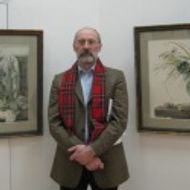- A
- A
- A
- ABC
- ABC
- ABC
- А
- А
- А
- А
- А
- HSE Campus in St. Petersburg
- School of Arts and Humanities
- Department of History
- Seminar "Boundaries of History" Alison Smith "A Microhistory of the Global Empire of Cotton: Ivanovo in the Nineteenth Century"
-
Department
-
Educational programmes
Address:
190068 Saint Petersburg
123 Griboedov channel, Room 123
Phone:+7 (812)786-92-49
Postal address:
190068 Saint Petersburg
123 Griboedov channel
Seminar "Boundaries of History" Alison Smith "A Microhistory of the Global Empire of Cotton: Ivanovo in the Nineteenth Century"
On April 20, 2017, the guest of the regular international scientific seminar "The Boundaries of History" was professor Alison Smith (University of Toronto), who presented her paper "A Microhistory of the Global Empire of Cotton: Ivanovo in the Nineteenth Century". The topic of the research was focused on a microhistory of a global empire of cotton in the XIX century. One of posed questions was looking at that interaction between the concept of microhistory, which is very local and individual, and the concept of global history, which is exactly the opposite to the previous one.
Basing on archival materials, Alison Smith investigates social estates of imperial Russia. She found out a huge number of serves, who were freed from serfdom and then becoming merchants, who had been governed by Dmitri Sheremetev. He was responsible for 9.2 – 6% of all serves who was involved in cotton industry. Starting to looking at the names of the serves, Smith noticed, that for the most part all of them were from Ivanovo.
From the beginning of the XIX century first textile machines started to arrive to Ivanovo.
According to the documents, serves on these factories got some extra skills, which paved the way to deeper development of cotton industry in Ivanovo. That is why not only was Ivanovo a center of textiles in the sense that it was a place in which linen or cotton fabric was produced, but although it was a center of printed chintz manufacturing and other kinds of fabrics, which was at times a major part of the industrial world of Ivanovo. Therefore, already in the first part of the XIX century some of the manufactories in Ivanovo were starting to be involved into world economy.
According to the archival material, Smith found out a specific shift: in 1824 household serf A. Nikitenko, who was rather a skilled and well-educated serf, convinced Sheremetev to free him. Nikitenko’s memoirs says that in the early 1820s Sheremetev was under the influence of manumission ideas. This moment lead to openness for petitions from serfs asking for their freedom.
Thus, according to Alison Smith, this village which had been was not typical, was a larger world of Russian village life. Even in beg of XIX century it was much more developed, being a center of industry. The task of microhistory can be linked to larger tasks of global context. Cotton was a revolutionary business, which changed the whole world. Both in terms of everyday life and in terms of the whole story.
The paper led to a vivid discussion about optics, from which slavery can be seen, historical context of slavery in Moskovia and its comparison with the emergence of slavery on a global scale.
Report by Margarita Pavlova

